 |
| July 11, 2017 | Volume 13 Issue 26 |
Materials News & Products
Designfax weekly eMagazine
Archives
Partners
Manufacturing Center
Product Spotlight
Modern Applications News
Metalworking Ideas For
Today's Job Shops
Tooling and Production
Strategies for large
metalworking plants
Weird stuff: Moon dust simulant for 3D printing
 Crafted from a lunar regolith simulant, Basalt Moon Dust Filamet™ (not a typo) available from The Virtual Foundry closely mirrors the makeup of lunar regolith found in mare regions of the Moon. It enables users with standard fused filament fabrication (FFF) 3D printers to print with unparalleled realism. Try out your ideas before you go for that big space contract, or help your kid get an A on that special science project.
Crafted from a lunar regolith simulant, Basalt Moon Dust Filamet™ (not a typo) available from The Virtual Foundry closely mirrors the makeup of lunar regolith found in mare regions of the Moon. It enables users with standard fused filament fabrication (FFF) 3D printers to print with unparalleled realism. Try out your ideas before you go for that big space contract, or help your kid get an A on that special science project.
Learn more.
Make nylon 3D-printed prototypes and parts in the office
 The new SLS 300 from 3D Systems is an affordable, turnkey, closed-loop 3D-printing system designed to operate in a smaller-footprint environment. SLS 300 makes selective laser sintering available to a broader range of customers with a high-reliability, affordable solution to produce end-use parts. Users can produce tough, durable parts from a range of production-grade nylon materials. Amazing fill, finishing, and clean-up systems.
The new SLS 300 from 3D Systems is an affordable, turnkey, closed-loop 3D-printing system designed to operate in a smaller-footprint environment. SLS 300 makes selective laser sintering available to a broader range of customers with a high-reliability, affordable solution to produce end-use parts. Users can produce tough, durable parts from a range of production-grade nylon materials. Amazing fill, finishing, and clean-up systems.
Learn more.
Will it erode? 3D-printing materials comparison from Xometry
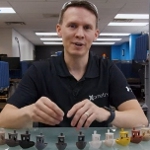 Which 3D-printed plastics are the toughest? In this "Will it ..." video, Greg Paulsen, Xometry's Director of Application Engineering, 3D printed Benchies (3D test models) using different materials (such as polycarbonate, PLA, polypropylene, ULTEM, and Nylon 11 and 12) and processes (such as FDM, SLS, MJF, SLA, LSPc, Polyjet, and DLS) and then ran several abrasion tests on them. Watch to find out which 3D-printed plastic is truly the toughest of them all!
Which 3D-printed plastics are the toughest? In this "Will it ..." video, Greg Paulsen, Xometry's Director of Application Engineering, 3D printed Benchies (3D test models) using different materials (such as polycarbonate, PLA, polypropylene, ULTEM, and Nylon 11 and 12) and processes (such as FDM, SLS, MJF, SLA, LSPc, Polyjet, and DLS) and then ran several abrasion tests on them. Watch to find out which 3D-printed plastic is truly the toughest of them all!
View Part 1.
View Part 2.
Graphene Handbook: Learn all about this wonder material
 Metalgrass LTD has published the 11th edition of its "Graphene Handbook," a comprehensive resource on graphene technology, the industry, and the market for this wonder material made of single layers of atoms of pure carbon. The book includes development history, production methods, current research, an intro to metrology and standardization, and even an investment guide. Under 100 bucks for digital edition. Hard copy available too.
Metalgrass LTD has published the 11th edition of its "Graphene Handbook," a comprehensive resource on graphene technology, the industry, and the market for this wonder material made of single layers of atoms of pure carbon. The book includes development history, production methods, current research, an intro to metrology and standardization, and even an investment guide. Under 100 bucks for digital edition. Hard copy available too.
Learn more.
Who knew? How colorants affect plastic
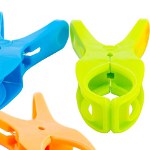 In plastic injection molding, one aspect of polymer characteristics that doesn't always get the consideration it deserves is the addition of colorant. Believe it or not, there is a whole scientific body of knowledge about the ways in which adding color to plastic can affect its behavioral properties. This short article by Denny Scher of ICO Mold takes a high-level look at some of the different, and surprising, ways colorants can affect plastics.
In plastic injection molding, one aspect of polymer characteristics that doesn't always get the consideration it deserves is the addition of colorant. Believe it or not, there is a whole scientific body of knowledge about the ways in which adding color to plastic can affect its behavioral properties. This short article by Denny Scher of ICO Mold takes a high-level look at some of the different, and surprising, ways colorants can affect plastics.
Read the full article.
Retaining magnets from JW Winco: Universal and clever
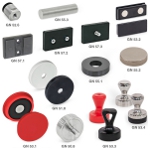 JW Winco has expanded its magnet line to support more applications with new materials, shapes, systems, and even raw magnets. Learn about their latest offerings, including retaining magnets designed for corrosive environments (GN 50.8), encapsulated magnets designed for sensitive or painted surfaces (GN 51.8), handle magnets (GN 53.3), and powerful magnets designed to handle challenging environs (GN 52.6).
JW Winco has expanded its magnet line to support more applications with new materials, shapes, systems, and even raw magnets. Learn about their latest offerings, including retaining magnets designed for corrosive environments (GN 50.8), encapsulated magnets designed for sensitive or painted surfaces (GN 51.8), handle magnets (GN 53.3), and powerful magnets designed to handle challenging environs (GN 52.6).
Learn more.
3D print tool steel with the ease of a plastic
 The Virtual Foundry, a pioneer in advanced 3D-printing materials, is excited to announce the launch of their latest innovation: M300 Tool Steel Filamet™ (not a typo). This material answers the demand for FFF 3D-printable Tool Steel, delivering unparalleled strength and versatility. What sets this material apart is its seamless compatibility with various 3D printers, including Creality, Bambu Lab, Ultimaker, and more. The filament prints effortlessly, resembling the ease of working with PLA (plastic).
The Virtual Foundry, a pioneer in advanced 3D-printing materials, is excited to announce the launch of their latest innovation: M300 Tool Steel Filamet™ (not a typo). This material answers the demand for FFF 3D-printable Tool Steel, delivering unparalleled strength and versatility. What sets this material apart is its seamless compatibility with various 3D printers, including Creality, Bambu Lab, Ultimaker, and more. The filament prints effortlessly, resembling the ease of working with PLA (plastic).
Learn more.
Great Resources: Sheet metal design guide
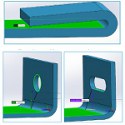 If you're looking for a basic guide to sheet metal design, this one from Xometry will serve your needs well. Follow the design requirements and tolerances in this guide to ensure parts fall closer to design intent. This is the type of information you'll sock away and then refer to again and again.
If you're looking for a basic guide to sheet metal design, this one from Xometry will serve your needs well. Follow the design requirements and tolerances in this guide to ensure parts fall closer to design intent. This is the type of information you'll sock away and then refer to again and again.
Read the full article.
Particle foam perfectly distributed thanks to simulation with Ultrasim
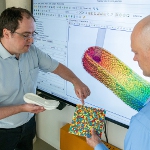 BASF's Ultrasim simulation solution now includes Infinergy, an expanded thermoplastic polyurethane (E-TPU) that is used in a wide range of applications to make components with particle foam -- from bicycle tires to the soles on shoes. Identify and solve problems related to pneumatic filling when distributing particle foams in molds, even taking gravity and mold closing into consideration. Avoid those pesky air pockets.
BASF's Ultrasim simulation solution now includes Infinergy, an expanded thermoplastic polyurethane (E-TPU) that is used in a wide range of applications to make components with particle foam -- from bicycle tires to the soles on shoes. Identify and solve problems related to pneumatic filling when distributing particle foams in molds, even taking gravity and mold closing into consideration. Avoid those pesky air pockets.
Learn more.
Premium polymer DLP printer is half the price of its predecessor
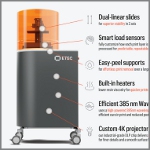 Desktop Metal has just launched the ETEC Pro XL -- a premium polymer digital light processing (DLP) printer that enters the market at less than half the price as its predecessor. DLP is regarded by many as a superior polymer 3D-printing technology for speed, surface finish, and accuracy. Ideal for automotive and machine parts, aerospace components, housings, connectors, jigs and fixtures, short-run molds, and more.
Desktop Metal has just launched the ETEC Pro XL -- a premium polymer digital light processing (DLP) printer that enters the market at less than half the price as its predecessor. DLP is regarded by many as a superior polymer 3D-printing technology for speed, surface finish, and accuracy. Ideal for automotive and machine parts, aerospace components, housings, connectors, jigs and fixtures, short-run molds, and more.
Read the full article.
CNC machining case study: One-of-a-kind computer chassis
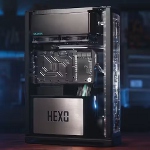 Learn how Josh Sniffen, the YouTuber behind the popular PC-building channel "Not From Concentrate," trusted Xometry to provide a wide range of manufacturing options, personalized Design for Manufacturing (DFM) feedback, and order management support for his latest creation: the HEXO ATX computer chassis. All in all, Sniffen procured parts using Xometry's CNC machining service, selective laser sintering 3D-printing service, and sheet metal cutting and fabrication services. A neat insider look at the process.
Learn how Josh Sniffen, the YouTuber behind the popular PC-building channel "Not From Concentrate," trusted Xometry to provide a wide range of manufacturing options, personalized Design for Manufacturing (DFM) feedback, and order management support for his latest creation: the HEXO ATX computer chassis. All in all, Sniffen procured parts using Xometry's CNC machining service, selective laser sintering 3D-printing service, and sheet metal cutting and fabrication services. A neat insider look at the process.
Read this Xometry case study.
Which parts should be 3D printed? AI combs through CAD files to find out
 One of the biggest challenges in transitioning to additive manufacturing (AM) is the ability to identify which parts are best suited for the process quickly and easily. Learn how Danfoss, Stanley Engineered Fastening, and even the U.S. military have utilized advanced additive manufacturing software to automate the process, reducing material waste and energy costs, improving part reliability, decreasing lead times, as well as now having the ability to identify part consolidation opportunities through intelligent AM decision-making.
One of the biggest challenges in transitioning to additive manufacturing (AM) is the ability to identify which parts are best suited for the process quickly and easily. Learn how Danfoss, Stanley Engineered Fastening, and even the U.S. military have utilized advanced additive manufacturing software to automate the process, reducing material waste and energy costs, improving part reliability, decreasing lead times, as well as now having the ability to identify part consolidation opportunities through intelligent AM decision-making.
Read the full article.
9 key design tips for injection molding
 Keep costs down and quality up all while optimizing your injection molded designs with these helpful tips from Xometry. Learn how to build better injection molded parts and products -- using draft angles, ribs and gussets, radii, fillets, and more -- and set expectations for the injection molding process. Good info here.
Keep costs down and quality up all while optimizing your injection molded designs with these helpful tips from Xometry. Learn how to build better injection molded parts and products -- using draft angles, ribs and gussets, radii, fillets, and more -- and set expectations for the injection molding process. Good info here.
View the video.
Metal additive manufacturing: Rocket turbopump design
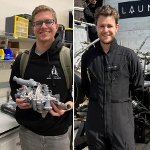 Mixing undergraduate curiosity and real-world engagement, two students from Colorado University Boulder Aerospace Engineering Sciences program, Zachary Lesan and Patrick Watson, started an independent effort on turbopump design and manufacture that is a lesson in determination and industry collaboration. With lots of supplies and advice from industry heavy hitters including Velo3D, CFturbo, SpaceX, and many more, their project has reinforced significant points being made about next-generation rocketry.
Mixing undergraduate curiosity and real-world engagement, two students from Colorado University Boulder Aerospace Engineering Sciences program, Zachary Lesan and Patrick Watson, started an independent effort on turbopump design and manufacture that is a lesson in determination and industry collaboration. With lots of supplies and advice from industry heavy hitters including Velo3D, CFturbo, SpaceX, and many more, their project has reinforced significant points being made about next-generation rocketry.
Read the full article.
Transparent ceramics for extreme optics
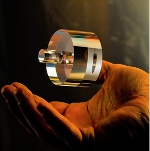 Sapphire is an inherently transparent ceramic material that is resistant to extremes of temperature and environment. Sapphire can be processed to unique and precise shape/form by diamond grinding and polishing to allow full transparency. INSACO is a global leader in this capability -- and working with ultra-hard materials in general.
Sapphire is an inherently transparent ceramic material that is resistant to extremes of temperature and environment. Sapphire can be processed to unique and precise shape/form by diamond grinding and polishing to allow full transparency. INSACO is a global leader in this capability -- and working with ultra-hard materials in general.
Learn more.
Engage the spin rocket motor: Drop of U.S. mock B61-12 nuclear weapon is first of new flight tests
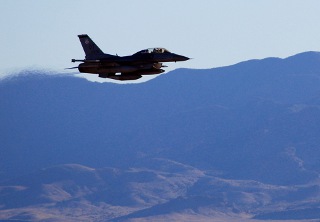
An F-16C makes a pass over Nevada's Tonopah Test Range after a March test of a mock nuclear weapon as part of a Sandia National Laboratories life extension program for the B61-12. Teams will spend months analyzing the data gathered from the test. [Photo: John Salois]
From a distance, the drop of a mock nuclear weapon -- containing only non-nuclear components -- was a mere puff of dust rising from a dry lake bed at Nevada's Tonopah Test Range. However, it marked the start of a new series of test flights vital to the nation's B61-12 weapon refurbishment program.
Initial data showed the March 14 test was a success, said officials at Sandia National Laboratories, which runs Tonopah. For months, teams will be analyzing a wealth of data they collected from this first of a qualification test series planned over the next three years.
Those watching from the tower of the range's Test Operations Center felt "excitement and pleasure that it all worked as we expected," said Anna Schauer, director of Sandia's Stockpile Resource Center.
The B61-12 consolidates and replaces four B61 variants in the nation's nuclear arsenal. The first production unit in the weapon's life-extension program is scheduled to be completed in 2020.
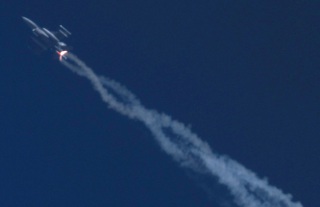
An F-16C from Nellis Air Force Base in Nevada releases a mock nuclear weapon for a March test at Tonopah Test Range. The test is the first in a series planned over the next three years. [Photo: James Galli]
Test day dawned cloudless and wind-free, perfect weather at the range, an area of 280 square miles with two main target areas on flat lake beds sitting between mountain ranges. Workers from Sandia and contractor Navarro Research and Engineering operated tracking telescopes, remote cameras, and other instruments in the field to gather information on the reliability, accuracy, and performance of the weapon under conditions meant to replicate operations.
An F-16C from Nellis Air Force Base near Las Vegas, chosen to drop the test unit representing a B61-12, began with a dry run over one of the lake beds. But during his next pass for the planned release, he had to roar off after a small group of wild horses ambled onto the lake bed.
A video feed from a remote camera in the area showed the horses trotting away to safety, herded by wranglers: security officers in a white pickup, its headlights and rack lights pulsing. "That's a first for us," said test director Joe Simile of Sandia. "We've never had to chase horses away from the target."
The extra pass meant the F-16 carrying the test unit and a companion wingman F-16 would have to refuel in flight from a tanker airplane circling the area before returning to base.
F-16 final pass: "Commence run"
Then, horses cleared off, the pilots circled back. The test director queried those responsible for the various aspects of the test, from telemetry to the pilot of the drop plane. One by one they gave the test a go and a disembodied voice over the intercom announced, "Range is green. Cleared to release."
The announcement, "Commence run," galvanized dozens of people watching and listening to live feeds of preparations at the tower. Most dashed out to the balconies to watch -- a natural reaction despite knowing the lake bed was miles away and they'd see nothing more than dust rising from the high-altitude drop. The video feed, a much closer look, showed the F-16 release the test unit, the unit's spin rocket motor ignite, and the mock weapon fall through the air.
"It's great to see things all come together: the weapon design, the test preparation, the aircraft, the range, and the people who made it happen," Schauer said.
The U.S. Department of Energy's website says, "In April 2003, the Nuclear Weapons Council Standing and Safety Committee (NWCSSC) approved the development of a new Spin Rocket Motor based on Sandia's assertions that test data collected between 1997 and 2002 showed the motors, due in large part to 'detrimental aging,' were not performing according to specifications. Detrimental aging occurs when a component's age prevents it from performing to meet military requirements."
According to a May 18, 2014, article in the Albuquerque Journal, "Spin motion is needed to stabilize the bomb as it glides toward its target. It's controlled by rocket motors and slanted fin tails. But in earlier B61 designs, air plumes from the motors have interfered with fin performance, thus weakening the push, or torque, created by the motors and reducing spin rates."
The article also says a new tail kit assembly "is important because it adds a guidance system to the bomb, basically converting it from a gravity-dependent dumb bomb into a smart one that can be aimed more precisely at a target."
These are only two of many steps taken in the broad nuclear arsenal modernization project.
"The bomb modernization program, which aims to extend the B61's life another 20 years, is one of the biggest endeavors undertaken at Sandia since before the Cold War ended," the Albuquerque Journal article states.
Hans Kristensen, a nuclear weapons analyst at the Federation of American Scientists in Washington, D.C., said in the Albuquerque Journal article, "The National Nuclear Security Administration estimated about $4 billion originally in 2010, and then in 2012 that ballooned to $8 billion. The new tail kit assembly alone could cost up to $1.5 billion."
"The U.S. Department of Defense now estimates total B61-12 program costs at $10.4 billion," the article said, attributing that estimate to Kristensen. "With about 400 B61 bombs to be refurbished, that's about $25 million per bomb."
VIDEO: Tonopah Test Range flight test.
After the drop, the two F-16s turned to scream past the control tower about a half mile away, giving observers a closer look at the planes.
On the lake bed, the only sign of the drop was a surprisingly neat hole. An hour or so after the test, Simile stood near the hole, describing plans to recover the weapon, his discussion punctuated by a warning beep-beep-beep from a truck backing up to unload recovery equipment.
Crews were back later to dig the mock weapon out of the dirt.
"The test unit recovery went very well, with the unit packaged up for return to Albuquerque," said Lee Post, B61-12 flight test lead. "We can only hope our future tests go this well."
Source: Sandia National Laboratories
Published April 2017
Rate this article
View our terms of use and privacy policy
